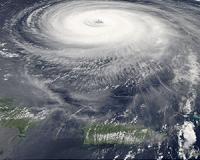| . |  |
. |
Washington (UPI) Aug 10, 2010 NASA scientists say an unmanned drone will help them discover the relationship between lightning and tropical storms to help in hurricane forecasting. Any change in intensity in a tropical cyclone is often accompanied by increases in lightning strikes, but whether more lightning meant the storm was strengthening or weakening has long eluded researchers, SPACE.com reported Monday. NASA says it plans to use a remotely piloted Global Hawk airplane -- the same drone model flown by the U.S. Air Force -- equipped with a Lightning Instrument Package to give an unprecedented, sustained look at the inner workings of hurricanes. "The availability of the Global Hawk makes this a very exciting and unique experiment," NASA study team leader Ramesh Kakar said. The drone, which can fly for up to 20 hours, will carry the LIP over the Gulf of Mexico and Atlantic Ocean at an altitude of more than 60,000 feet for 40 days during August and September. "We'll be able to see a storm in a way we've never seen it before," said LIP team leader Richard Blakeslee at NASA's Marshall Space Flight Center in Huntsville, Ala. "We'll see how the storm develops over the long term, and how lightning varies with all the other things going on inside a hurricane," he said. "It's the difference between a single photograph and a full-length movie."
Share This Article With Planet Earth
Related Links Bringing Order To A World Of Disasters When the Earth Quakes A world of storm and tempest
 NASA's Hurricane Quest Set To Begin
NASA's Hurricane Quest Set To BeginWashington DC (SPX) Aug 10, 2010 In less than two weeks, NASA scientists will begin their quest for the holy grail of hurricane research. The exact conditions required to kickstart a tropical depression into a hurricane largely remain a mystery. Though scientists know many of the ingredients needed, it is unclear what processes ultimately drive depressions to form into the intense, spinning storms that lash the U.S. coast ... read more |
|
| The content herein, unless otherwise known to be public domain, are Copyright 1995-2010 - SpaceDaily. AFP and UPI Wire Stories are copyright Agence France-Presse and United Press International. ESA Portal Reports are copyright European Space Agency. All NASA sourced material is public domain. Additional copyrights may apply in whole or part to other bona fide parties. Advertising does not imply endorsement,agreement or approval of any opinions, statements or information provided by SpaceDaily on any Web page published or hosted by SpaceDaily. Privacy Statement |